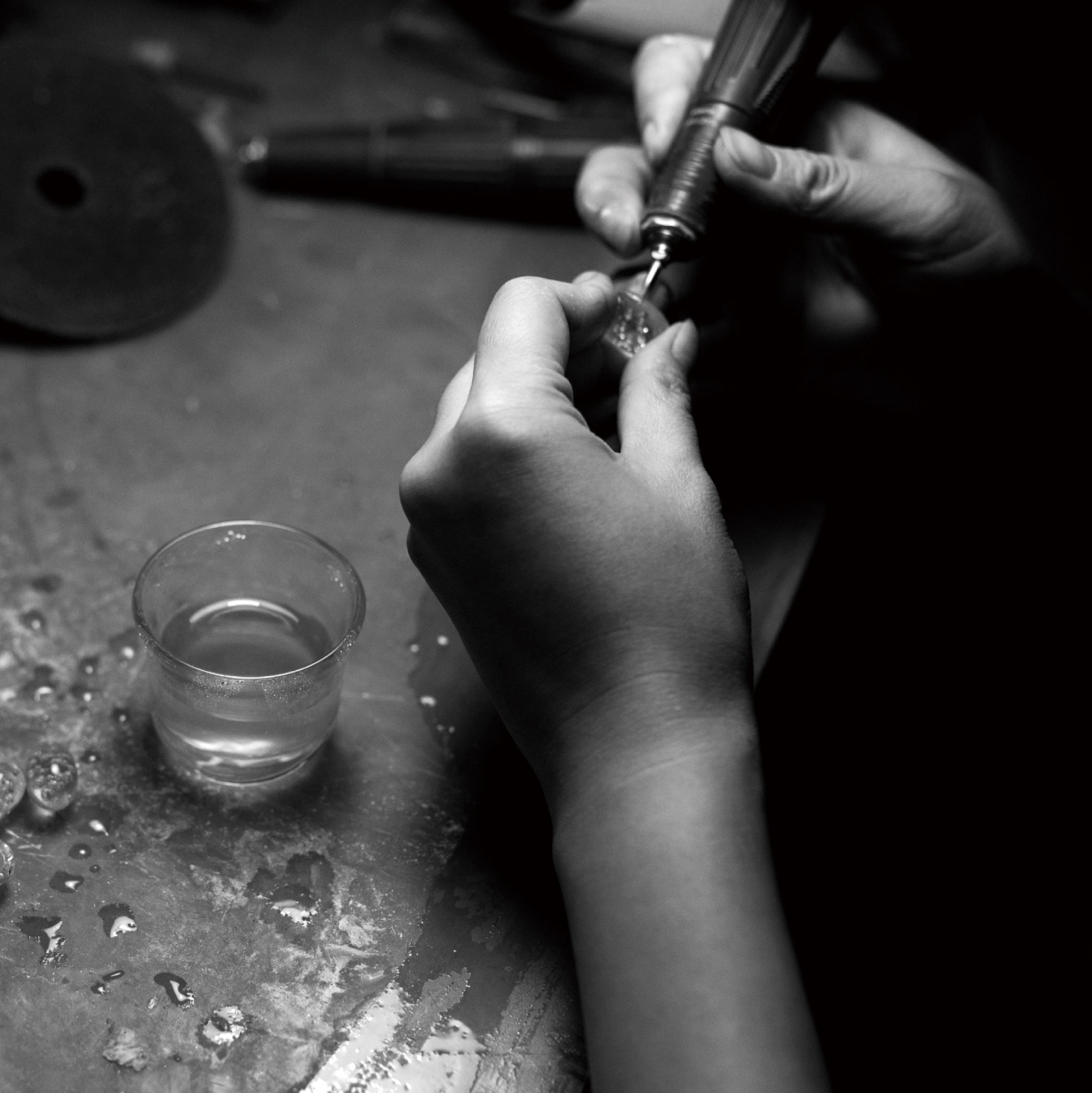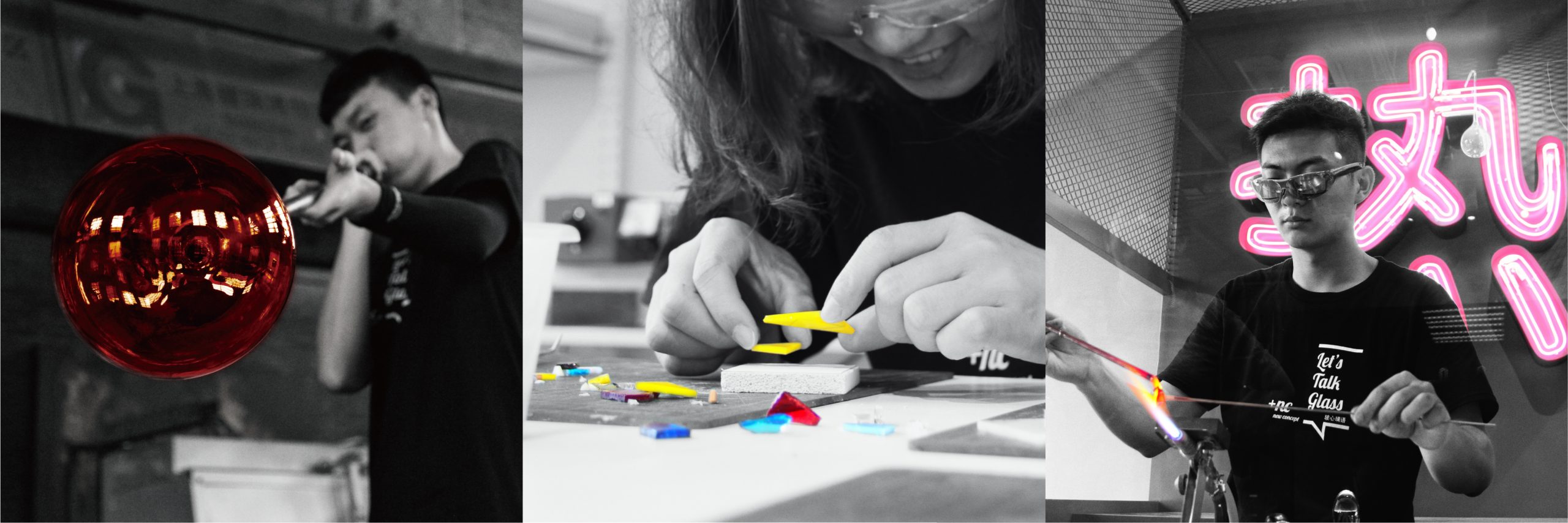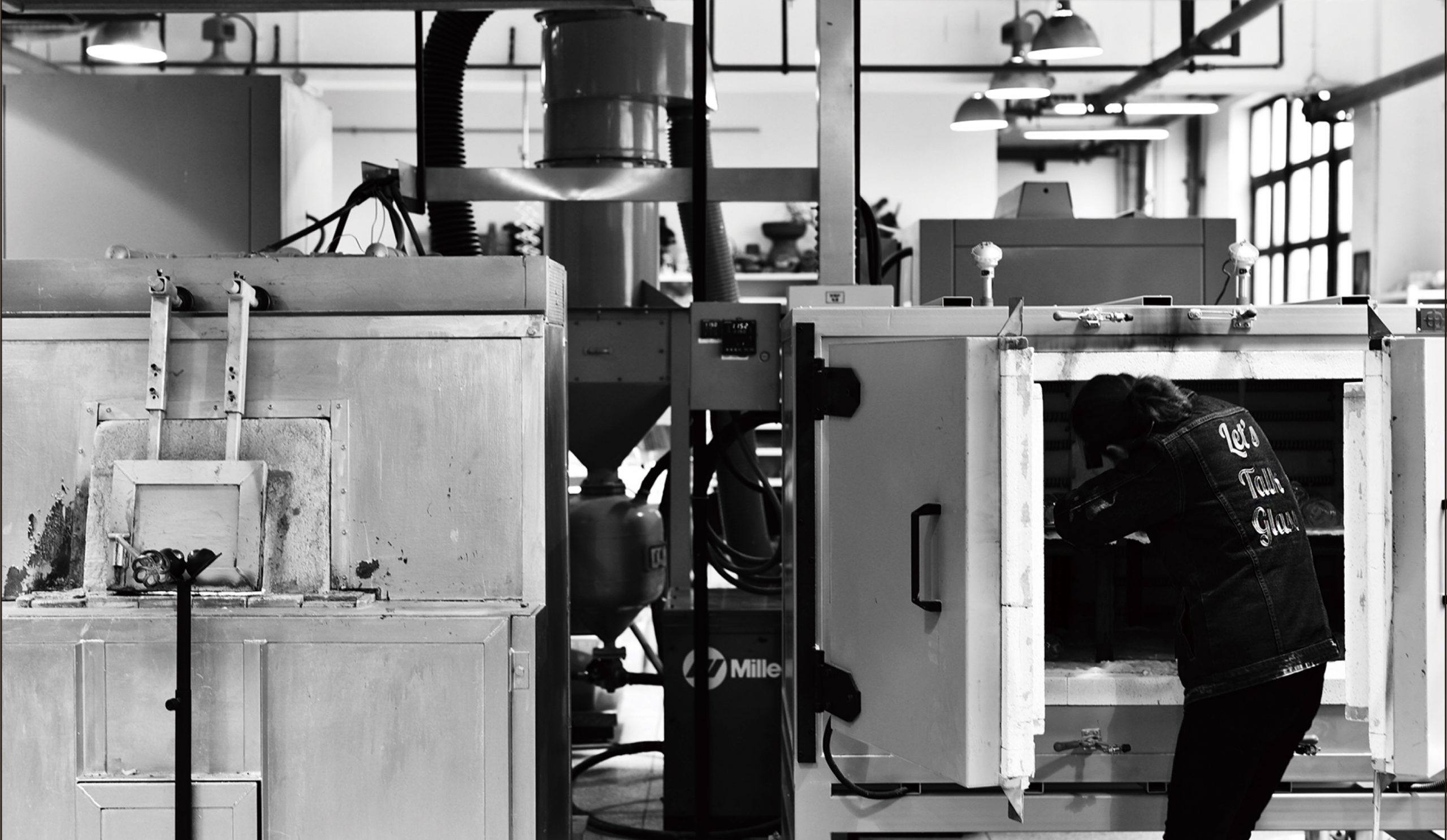
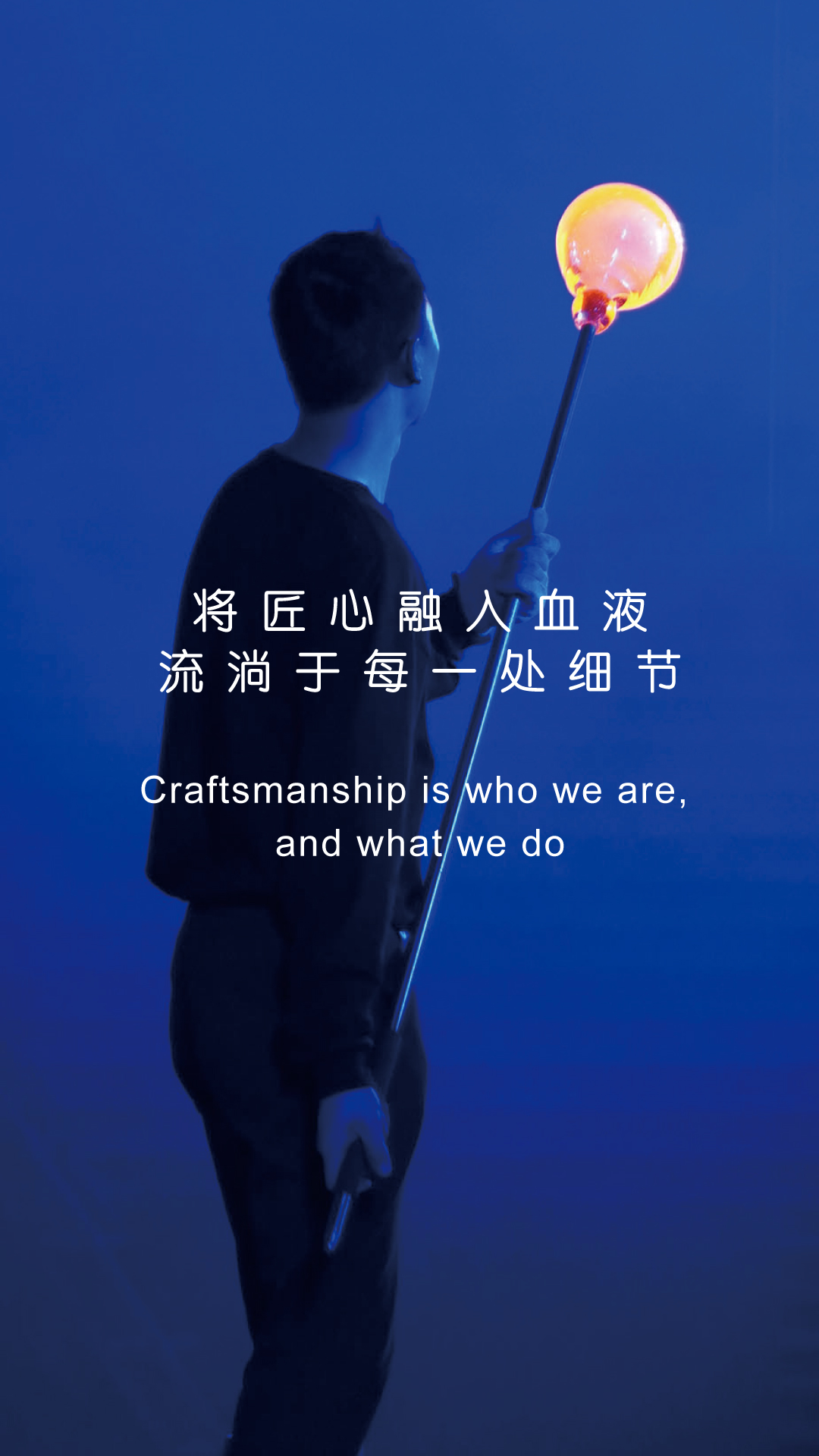
我们对工艺的探索有着极大的热忱和执着,秉承着精益求精的工匠精神,严选原料、创新工艺、专注细节,创造非凡体验。
工作坊还提供个性化的课程和体验,专业人士和玻璃爱好者都可以在这里激发艺术灵感、享受创作的乐趣。
Every artisan at GLASS TALKING is extremely passionate and persistent in exploring the craft of glass art making. Since craftsmanship is about constant improvement, our motto is to use the right materials, innovate our craft, pay attention to details, and create art works that dazzle.
Out work shop also offers customized courses and hands-on experience, so that professionals and hobbyists alike can get inspired here and enjoy the fun of making glass art.

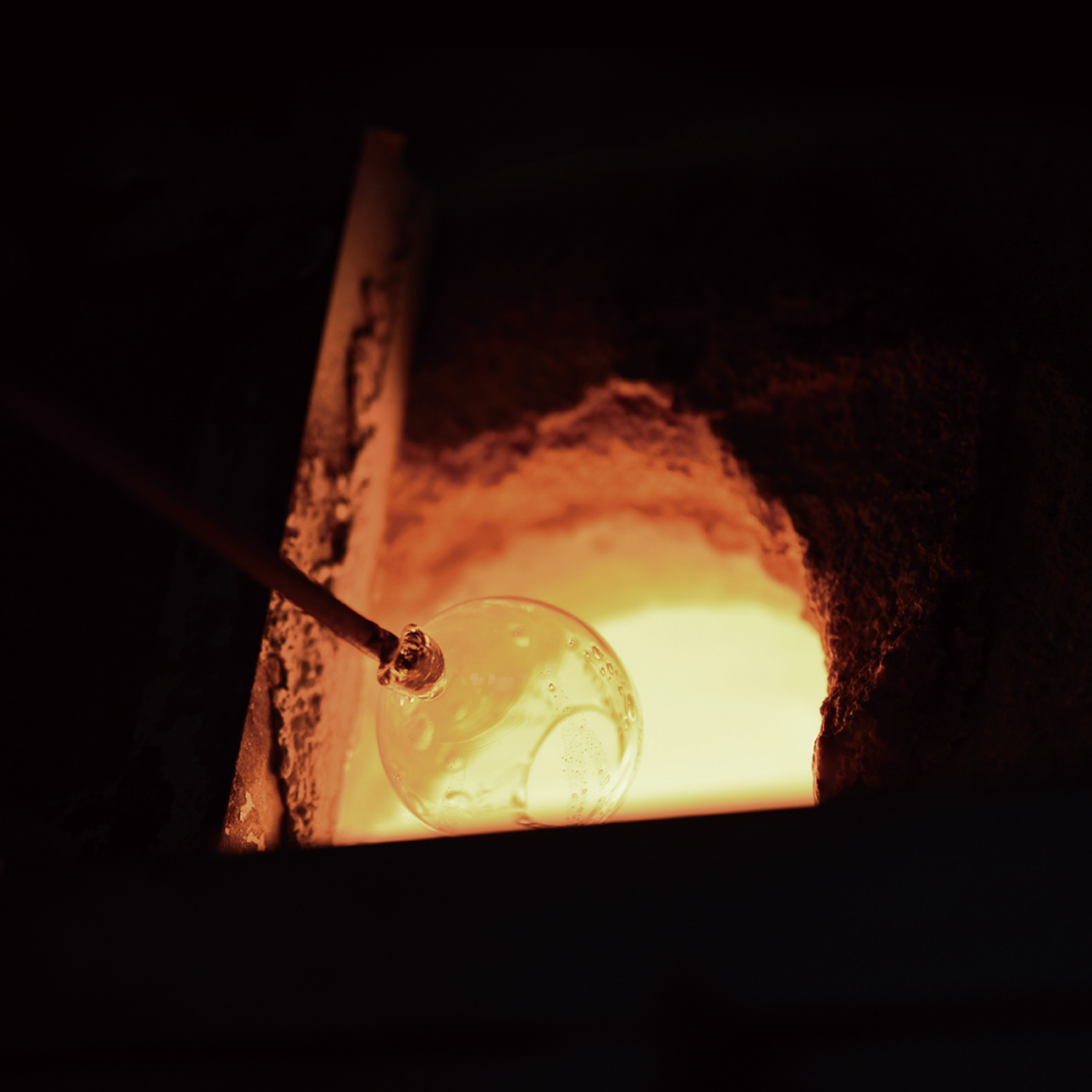
吹制是一种延续了几千年的古老工艺,由于制作过程中的玻璃料始终处于熔融状态,温度非常高,故也被称为热玻璃吹塑。炽热的玻璃料从1150°C的高温熔炉内挑出,在熔融状态下经历吹制,塑型、重热、再吹制、塑形等往复操作,再经24小时以上的退火冷却,最后进行切割研磨,精修抛光,每一步都是匠心凝聚。
Blowing
Blowing is an ancient glass forming technique with thousands of years of history. As the glass is in a very hot and molten state throughout the process, blowing is also called hot glass shaping. Blowing starts with taking the scorching glass out from a 1150 °C furnace, blowing air into the molten glass, shaping it up and reheating the glass. This process is repeated several times before a semi-finished product is produced and annealed for 24 hours. Finally, after careful cutting and polishing, a masterfully crafted glassware is born.
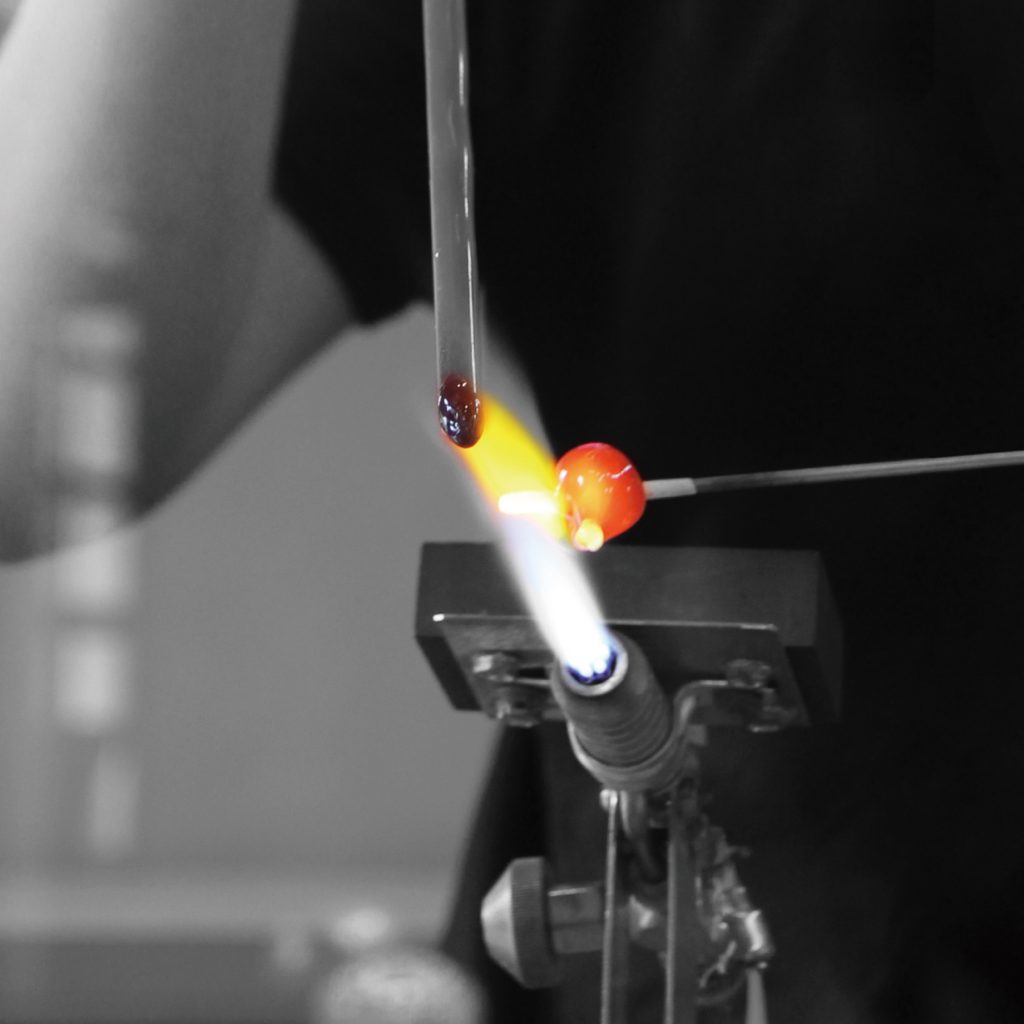
灯工工艺使用液化气和氧气混合燃烧的超高温火焰将玻璃迅速加热至熔融状态,然后进行塑形,由于早期使用煤灯作为工具,故称之为灯工。由于设备相对简单,灯工工艺在众多热玻璃工艺中灵活度较高,但需要制作过程中时刻关注玻璃料与火焰的关系,长期操作才能熟练掌握。
Lampworking
Lampworking uses the extreme temperatures of flames from igniting liquid gas with oxygen to quickly heat glass into a molten state, and then shaping it. This technique got its name because it was once done with lamp fire. As this technique does not require sophisticate equipment, it is among the more accessible glass making methods for the average layperson. That being said, it is no easy task, since it requires consistent attention on how the flames and the glass interact, and can only be mastered with experience.
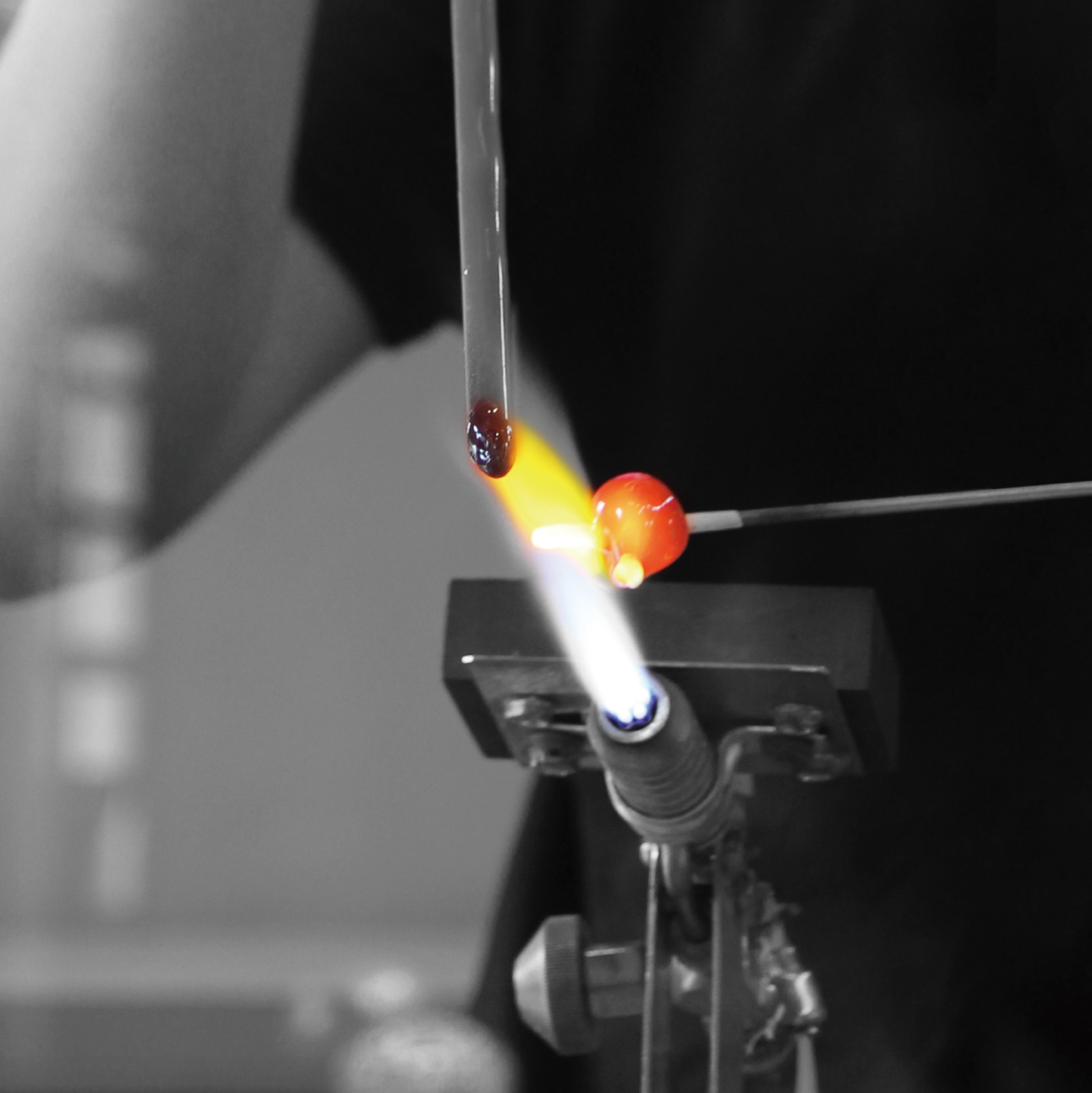
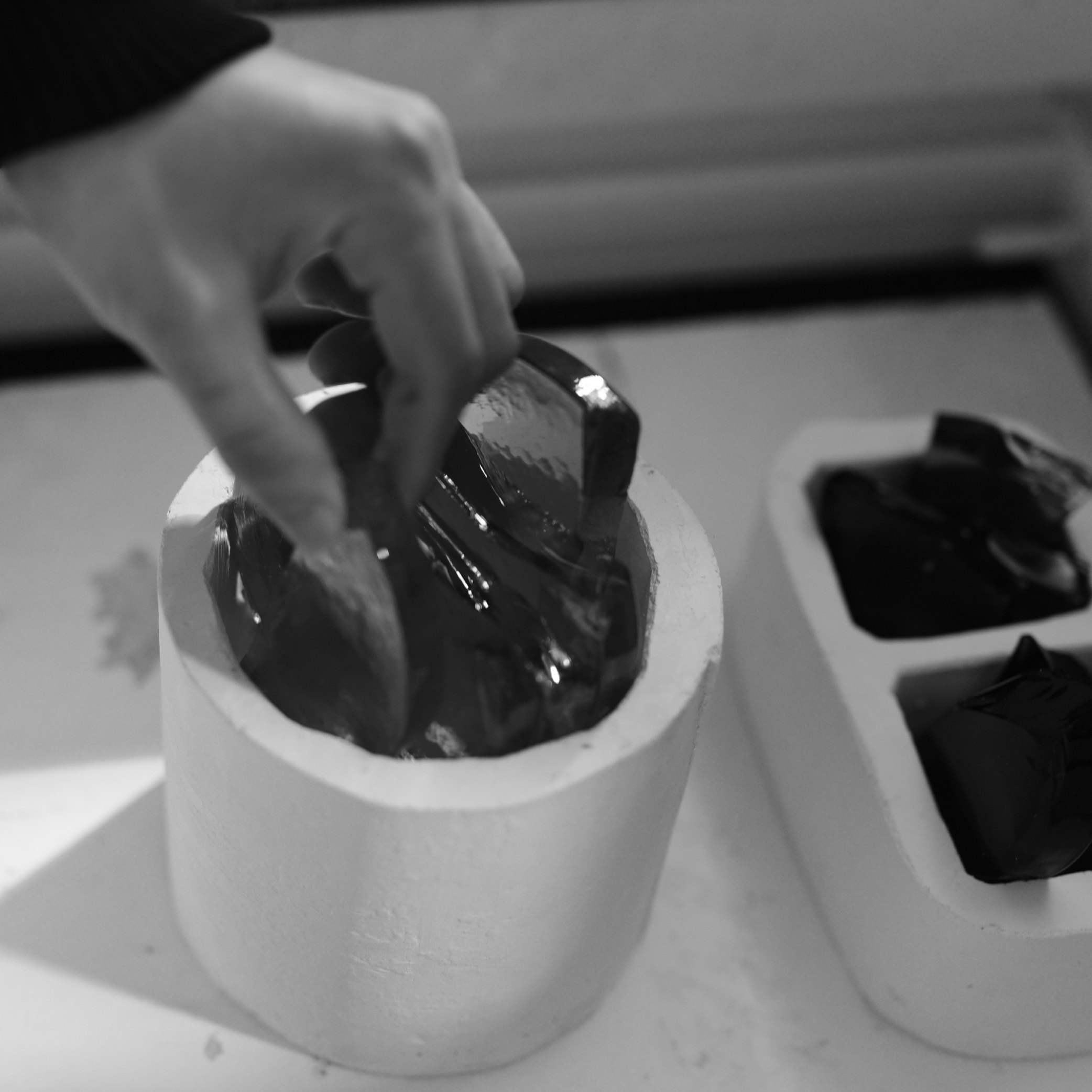
铸造工艺基本延续古法脱蜡铸造技术,利用高温耐火模具的耐热性和液态玻璃的流动性进行塑型。一般先塑造母型,然后翻制成耐火模具,在模具中填入玻璃原料,放置窑内玻璃经高温熔化凝固退火后去除模具,再经几十道冷工工艺精修研磨而成。
Casting
Casting essentially is a continuation of the ancient lost-wax casting technique that utilizes molten glass’s fluidness and a fire-proof mold’s resistance to high temperature to mold glass into desired shapes. Typically, we shape out the master mold first, then make a fire-resistance mold in its likeness. Next, we fill this mold with glass and place it in the kiln for heating. When the glass has completely melted to fit the mold, it is annealed and cooled into shape, and the mold can be removed. Finally, after a few dozen coldworking processes, the final product is polished and ready.
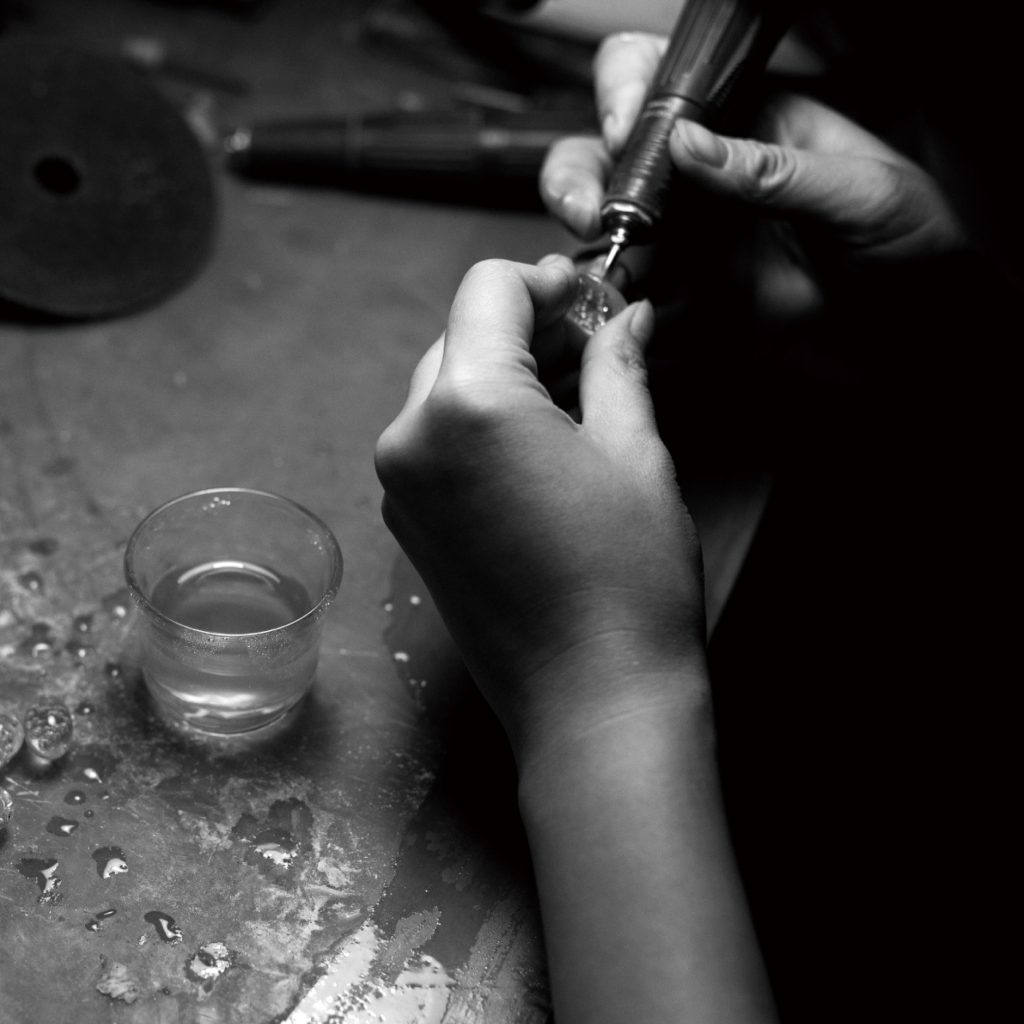
火里来水里去,经历漫长的退火冷却后,玻璃还要进行切割,研磨,抛光等步骤,才能呈现出最终的质感。除了研磨以外,玻璃的冷加工技术还有描绘、雕刻、喷砂、蚀刻、丝印、电镀等多种工艺,都极富表现力,一件精美的作品往往复合着多种工艺。
Cold Working
The beauty of glassware is a grinding story of fire and water. After a long annealing process, a glassware needs to be cut, smoothened, polished and so on, before its final texture is presented. One could also get expressive in the cold working process, and decorate the glass with steps like painting, engraving, sandblasting, etching, silk screening, plating, to name a few. The making of an intricate glassware really involves a great deal of different techniques and processes.
